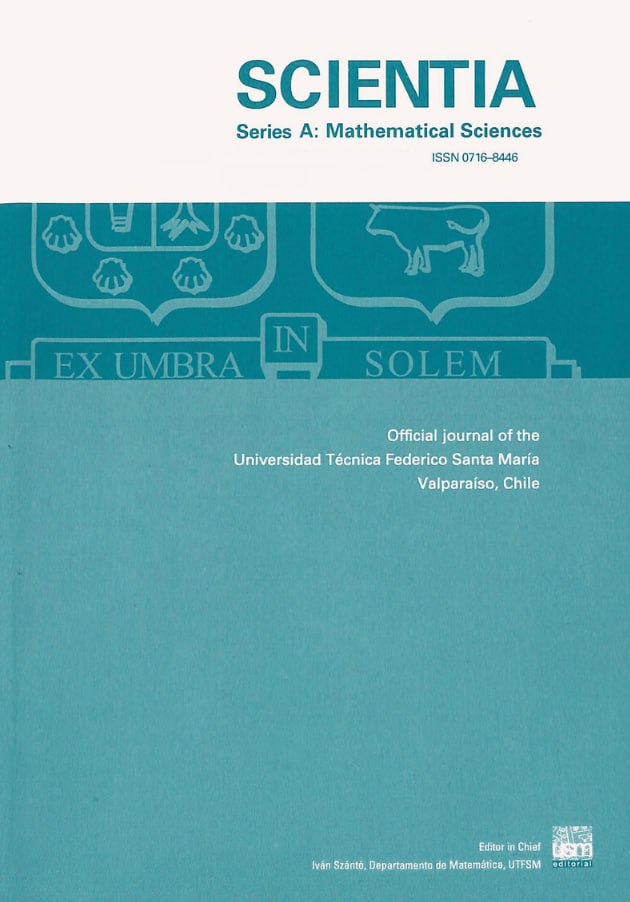Published 2009-09-09
Keywords
- center,
- vertex-to-edge center,
- edge-to-vertex center,
- edge-to-edge center.
Copyright (c) 2025 Scientia Series A: Mathematical Sciences

This work is licensed under a Creative Commons Attribution-NonCommercial 4.0 International License.
How to Cite
Abstract
For any vertex \(v\) and any edge \(e\) in a non-trivial connected graph \(G\), the \( { eccentricity } e(v)\) of \(v\) is \(e(v) = \max\{d(v, u) : u \in V\}\), the \( {vertex - to - edge eccentricity} e_1(v)\) of \(v\) is \(e_1(v) = \max\{d(v, e) : e \in E\}\), the \({ edge-to-vertex eccentricity } e_2(e)\) of \(e\) is \(e_2(e) = \max\{d(e, u) : u \in V\}\) and the \({ edge - to - edge eccentricity} e_3(e)\) of \(e\) is \(e_3(e) = \max\{d(e, f) : f \in E\}\). The set \(C(G)\) of all vertices \(v\) for which \(e(v)\) is minimum is the \( {center}\) of \(G\); the set \(C_1(G)\) of all vertices \(v\) for which \(e_1(v)\) is minimum is the \( {vertex-to-edge center}\) of \(G\); the set \(C_2(G)\) of all edges \(e\) for which \(e_2(e)\) is minimum is the \( {edge-to-vertex center}\) of \(G\); and the set \(C_3(G)\) of all edges \(e\) for which \(e_3(e)\) is minimum is the \( {edge-to-edge center}\) of \(G\). We determine these centers for some standard graphs. We prove that for any graph \(G\), either \(C(G) \subseteq C_1(G)\) or \(C_1(G) \subseteq C(G)\); and either \(C_2(G) \subseteq C_3(G)\) or \(C_3(G) \subseteq C_2(G)\). we also prove that \(C_1(G)\) is a subgraph of some block of \(G\); and the vertex set of every graph with at least two vertices is the vertex-to-edge center of some connected graph. Block graphs \(G\) having exactly one cut vertex are characterized for (i) \(C(G) = C_1(G)\); and (ii) \(C_2(G) = C_3(G)\). It is proved that for any non-trivial tree \(T, (i) C_1(T) = C(T)\); and (ii) \(C_2(T) = C_3(T)\), where the subgraph induced by \(C_2(T)\) is a star.







